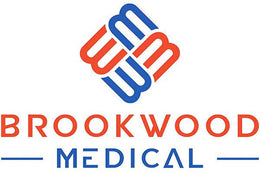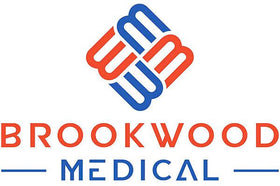Mastering Mask Etiquette: Key Wear Guidelines You Should Know

Frequently Asked Questions
1. Why is mask etiquette important?
2. When should I wear a mask?
3. Where are masks especially necessary?
4. What types of masks are available and suitable for use?
5. What are some tips for proper mask usage?
As the world navigates through changing health protocols and guidelines, understanding the essential mask etiquette has never been more important. Whether it's for a quick outing to the grocery store or attending a larger social event, knowing when and where to wear your mask can make all the difference in ensuring the safety of yourself and others. In this article, we will delve into mask etiquette, the reasoning behind it, and practical tips for wearing masks effectively. We’ll also highlight the benefits of using specialized gear like 10 valve sets for masks to enhance safety and comfort.
Understanding Masks and Their Purpose
Before diving into when and where to wear masks, it's crucial to understand their purpose. Masks work as a barrier that helps prevent respiratory droplets, which may contain viruses, from traveling into the air and potentially infecting others. In crowded environments, this protective function becomes even more critical. Hence, knowing the appropriate settings for mask-wearing can keep communities safer and healthier.
When to Wear a Mask
Here are some essential guidelines on when you should wear a mask:
Indoors in Public Spaces
Wearing a mask indoors has become a common health measure. The enclosed environment can trap respiratory droplets, making it crucial to mask up in places like:
- Grocery stores
- Shopping malls
- Restaurants (when not seated)
- Public transportation
- Community centers
In many areas, local laws or business policies may require masks in these settings. Regardless, it’s always a good practice to wear one to prioritize safety.
Outdoors in Crowded Areas
While the risk of transmission outdoors is significantly lower than indoors, it’s still a wise decision to wear a mask in crowded scenarios. Events like:
- Concerts
- Sporting events
- Farmers' markets
can bring people close together; hence, for added protection, consider putting on a mask, especially if social distancing is hard to maintain.
When You’re Sick or Experiencing Symptoms
If you’re feeling unwell or showing symptoms of a respiratory illness, wearing a mask is your responsibility not just to protect yourself, but to safeguard those around you. This simple action can help prevent the potential spread of infections, allowing you to care for your health while being considerate of others.
During Travel
Traveling, whether locally or internationally, can put you in high-risk environments where mask-wearing is critical. This includes:
- Airports
- Airplanes
- Train stations
- Bus terminals
Be sure to check travel guidelines and requirements for your destination, as many places still mandate mask-wearing, particularly in high-traffic areas.
Where to Wear a Mask
Knowing when to wear a mask is essential, but understanding where to wear it can further maximize its effectiveness. Below are settings where masks are especially crucial.
Healthcare Settings
Hospitals, clinics, and nursing homes have strict policies regarding mask-wearing due to the increased vulnerability of patients. If you need to enter any healthcare facility, please wear a mask, not just out of obligation, but as a crucial step in preserving the health of those who are more at risk.
Schools and Educational Institutions
As students return to classrooms, many schools have implemented mask mandates. Wearing masks protects students and educators from potential infections. Be sure to follow your school's guidelines, which may include wearing a mask at all times in common areas or when social distancing is not possible.
Workplaces
In many corporate and industrial environments, wearing a mask is often required, especially in shared spaces. Employers may issue specific policies regarding masks, often depending on local health directives. Even if not mandated, using a mask during office hours can minimize workplace transmission risks, thus benefiting everyone.
Types of Masks: Choosing the Right One
Not all masks are created equal, and knowing which type to wear can impact your safety and comfort. Standard options include:
Cloth Masks
Cloth masks can provide a solid barrier when made with multiple layers of fabric. They should be snug but comfortable and often come in varying styles and colors. Adding a filter or investing in a specialized kit such as 10 valve sets for masks can enhance their protective capabilities.
Surgical Masks
These disposable masks are designed to protect against droplets and are often favored in healthcare settings. They are recommended for short-term use and offer a higher level of protection than cloth masks.
N95 and KN95 Masks
These masks provide a higher filtration level and are better suited for high-risk environments. They are considered an essential choice for healthcare workers but can also be useful for the general public in crowded areas.
Tips for Proper Mask Usage
Effective mask-wearing goes beyond just putting it on. Follow these tips to ensure you're using your mask correctly:
Ensure a Proper Fit
Your mask should completely cover your nose and mouth. Avoid any gaps or loose areas that could allow respiratory droplets to enter or exit.
Avoid Touching Your Mask
Once your mask is on, avoid touching it to prevent transmitting germs to your hands. If you need to adjust it, wash your hands beforehand.
Handle Carefully When Removing
When taking off your mask, use the ear loops or ties instead of grabbing the front. Wash your hands immediately afterward.
Regularly Clean Masks
For cloth masks, wash them after every use. For disposable ones, follow local guidelines on disposal. If symptoms arise or if you've been in a high-risk area, it may also be necessary to replace your mask.
Consider Local Health Guidelines
Mask mandates can vary from one location to another. Stay updated on the latest health recommendations for your area, as these can change based on evolving circumstances. Following local guidelines not only protects you but contributes to the greater good of the community.
Making Mask-Wearing Part of Daily Life
Incorporating mask-wearing into your daily routine is crucial for creating safer environments. Cultivating an understanding of when and where to wear masks helps instill a culture of safety in your community. Empower yourself with knowledge about mask etiquette and lead by example.
Embracing Change and Staying Safe
Mask etiquette is an essential aspect of modern social conduct. While it might have felt unusual at first, the world is beginning to adapt to this new norm. By understanding when and where to wear masks and choosing the right type, you can significantly contribute to the well-being of those around you. Embrace this change, and remember that small acts of consideration, like wearing a mask, can have a substantial positive impact on your community. Stay informed, stay vigilant, and wear your mask as a badge of responsibility!






